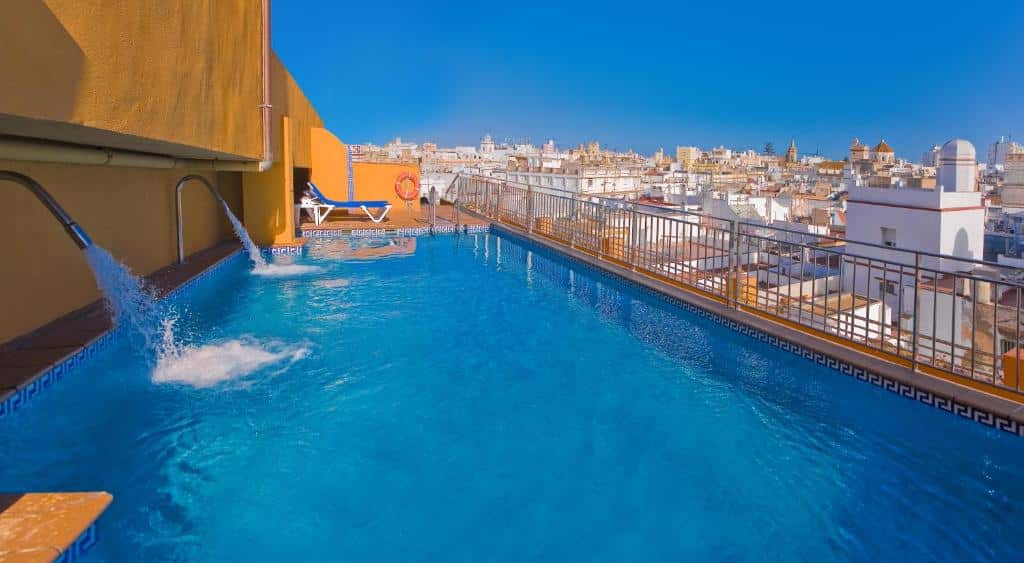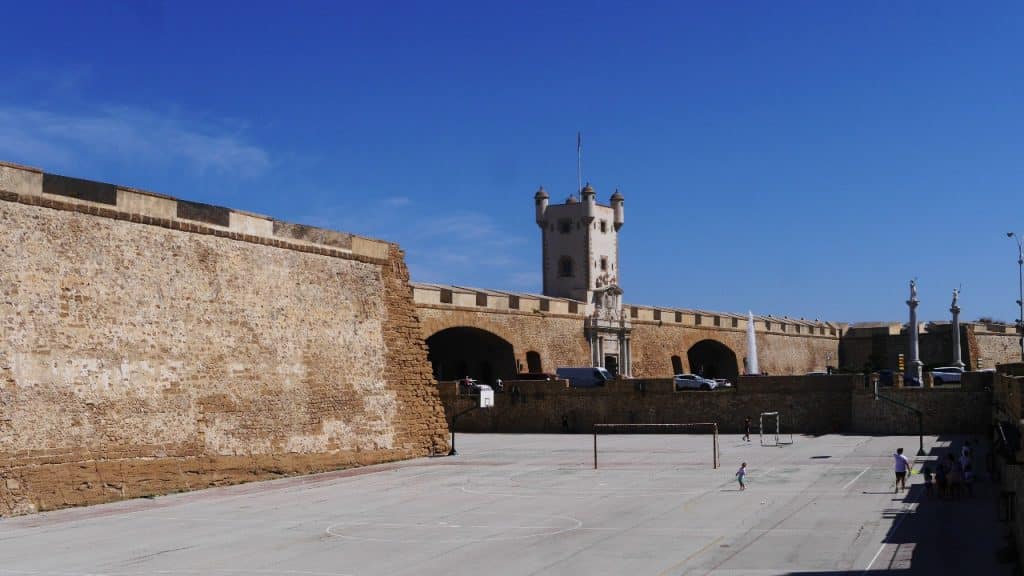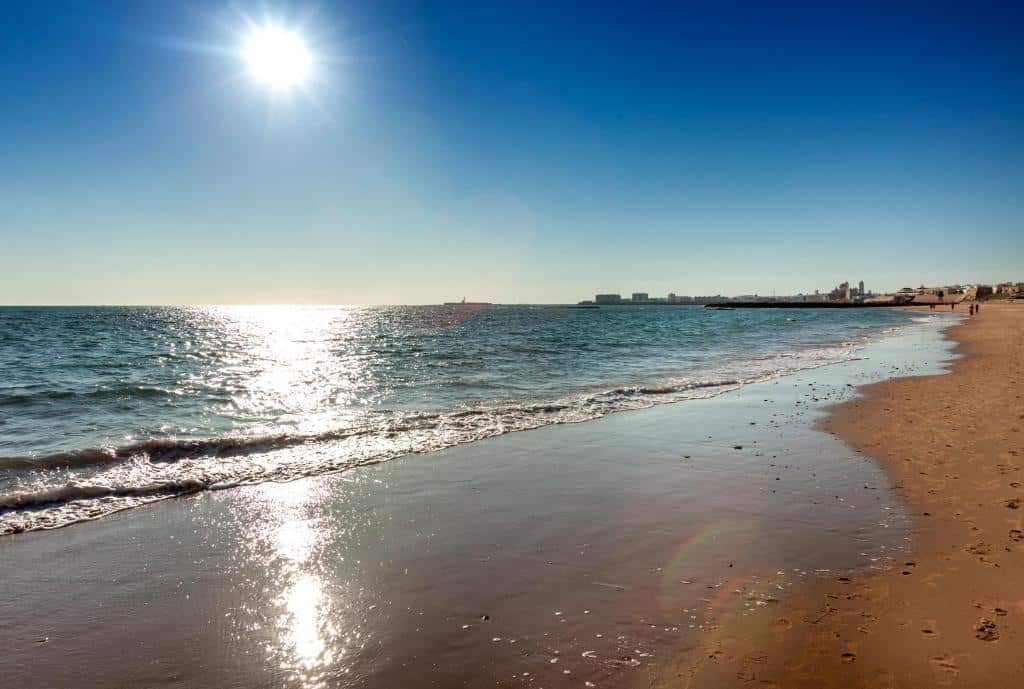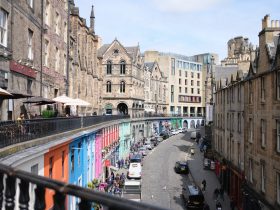Where to Stay in Cádiz – A Guide to the Oldest City in Spain
Cádiz is a city located on Andalusia’s southwest coast. Considered one of the most beautiful cities in Spain, Cádiz is famous for its antiquity, historical importance, architectural legacy, gastronomy and beaches. In this article, we will explore the best areas to stay in Cádiz, Spain.
Why you should visit Cádiz
Located on the Bay of Cádiz, at the tip of a peninsula connected to the mainland by a narrow sandy isthmus, Cádiz is the oldest continuously inhabited city in Spain. Its foundation is attributed to the Phoenicians in the 12th century BC, which makes it roughly 1,000 years older than Barcelona and 2,000 years older than Madrid.
During Roman times, Cádiz became the main city of the Augusta Urbs Julia Gaditana colony. The epicentre of Roman Gades was located in the neighbourhood of El Pópulo. The main Roman-era attraction in Cádiz is the Teatro Romano, the oldest and second-largest Roman theatre in Spain. Find accommodation in El Pópulo.
The fall of Rome and the arrival of the Visigoths to Hispania meant the destruction of the original city. With the arrival of the Muslims to the Iberian Peninsula, Gades was renamed Qadis. The Moors were expelled by Alfonso X of Castile in 1262. During the Age of Discovery, Cádiz experienced a rebirth. Christopher Columbus set sail from Cádiz on his second and fourth voyages to the Americas and the city became the main port of the Spanish Navy. As a consequence, Cádiz became a target for the enemies of Spain. It was at this time that the main defensive structures, castles, walls and bastions of the city were erected. Find accommodation in the Historic City Centre of Cádiz.
The commercial flourishing of Cádiz and its growing strategic importance made it one of the most prosperous and cosmopolitan cities in Spain. Between the seventeenth and nineteenth centuries, the city underwent a notable transformation; the main churches, squares and palaces in Cádiz date from these centuries. In 1812, Cádiz would once again play an important role in one of the key events in the history of Spain, when it served as the headquarters for the writing of the first Spanish Constitution.
Today, Cádiz is one of the most important tourist destinations in Andalusia, both for cultural getaways and beach trips. The main beaches of Cádiz include La Caleta, Santa María del Mar, La Victoria and La Cortadura.
In addition, the city of Cádiz is an excellent starting point to explore the wonderful towns and beaches of the Andalusian Costa de la Luz.
When to visit Cádiz
Thanks to its coastal location between the Atlantic Ocean and the Bay of Cádiz, Cádiz has a temperate Mediterranean climate. This translates into hot, dry summers and mild winters. The temperatures during the summer usually oscillate between 20 and 29 ºC. On the other hand, during the winter they are usually between 6 and 19 ºC. The best time to visit Cádiz if you plan to go to the beach is summer (between June and September). On the other hand, for cultural visits, the best time to visit Cádiz is between October and May, since the mild temperatures allow you can walk around its streets..
Cádiz is especially famous for its traditional festivals. The most important popular celebrations in the city are the Carnivals and Semana Santa (Easter). During the Cádiz Carnivals, which usually take place in February or March, you can expect parades, concerts, street parties and costumes. On the other hand, Easter celebrations are usually much more solemn and mainly include religious events.
Keep in mind that while Carnival is probably the most fun time to visit Cádiz, these celebrations attract thousands of tourists from all over the country and finding a place to stay in Cádiz can be difficult. If you decide to visit Cádiz during Carnivals, you should book your accommodation well in advance. Find accommodation in Cádiz.
Cádiz: Getting there and around
In order to fly to Cádiz, this city is served by the nearby Aeropuerto de Jerez de la Frontera (XRY). Located some 43 kilometres northeast of the city, this airport offers some domestic connections to places like Madrid, Barcelona, Bilbao, Palma de Mallorca or Gran Canaria, and a handful of international flights to destinations in the United Kingdom, Portugal, Germany and Switzerland.
Cádiz is also connected by medium and long-distance train services to Jerez, Seville, Jaén and Madrid. The C1 commuter line connects Cádiz with several towns in the Bay and several coach routes link the city with the main towns in and cities in Spain. Check train and coach schedules, routes and fares.
Additionally, Cádiz is connected to El Puerto de Santa María and Rota through frequent catamaran services and there are ferry connections to Arrecife (Lanzarote) and Las Palmas de Gran Canaria. See ferry schedules, routes and fares.
To move around the city, Cádiz has an urban bus system and you can also rent a car or move around by taxi.
Where to stay in Cádiz
The best area to stay in Cádiz is the Historic City Centre. The old town of Cádiz is home to most of the cultural and historical attractions and the main areas for tapas, nightlife and shopping. The Historic City Center is also close to La Caleta Beach and has excellent public transport connections and accommodation of all kinds. Find accommodation in the Historic City Centre of Cádiz.
But since the old town of Cádiz encompasses different neighbourhoods, each one with a different atmosphere. In order for you to find the best area to stay in Cádiz, we divided this beautiful district into different areas. For example, La Viña is the best area for tapas in Cádiz and is close to La Caleta Beach, El Pópulo is home to a good part of the city’s historical attractions, the neighbourhoods north of the City Centre offer views of the bay and beautiful squares, Falla, Balón & San Felipe Neri are the city’s commercial area, and Barrio de Santa María is located near the train station and the harbour.
Other excellent areas outside the Old Town to keep in mind when choosing the best location in Cádiz for tourists include Santa María del Mar Beach, La Victoria Beach and La Cortadura Beach.
Keep reading to learn more about the best areas to stay in Cádiz, Spain.

The Best Areas to Stay in Cádiz, Spain
1. Recommended area: La Viña & La Caleta
Barrio de La Viña is one of the most traditional areas of Cádiz.
This old fishing neighbourhood occupies the southeast corner of the Historic City Centre of Cádiz and is located right next to La Caleta Beach.
La Viña is considered the quintessential tapas area of Cádiz.
La Viña is famous for its bustling taverns and tapas bars serving sherry wine and traditional pescaíto frito (fried fish).
Corralón de Los Carros and Virgen de la Palma streets are home to some of the most famous tapas bars in the city, including Taberna Casa Manteca, a local institution.
Every year, during the Carnival celebrations, the squares of La Viña are filled with music and colour.
Very close to La Viña is the Playa de la Caleta, which historically served as the city’s port during Phoenician, Carthaginian and Roman times.
La Caleta is the smallest and most central beach in Cádiz and in its surroundings there are attractions such as the Castillo de San Sebastián, the Balneario de Nuestra Señora de la Palma and del Real and the Baluarte de los Mártires.
La Viña is the best area to stay in Cádiz for travellers looking for the best tapas and being close to the beach.
Like the rest of the centre of Cádiz, the La Viña area stands out for its wide range of tourist apartments of all categories.
Being a historical area with narrow streets, the best way to get around La Viña and La Caleta Beach is on foot.
Additionally, there are several bus stops on Avenidas Campo del Sur and Duque de Nájera.



Why is this a recommended area to stay in Cádiz:
- La Caleta Beach
- Best area to go for tapas in Cádiz
- Castillo de San Sebastián
- Tourist apartments
Accommodation in this area
-

Plaza de la Luz Cádiz
Plaza de la Luz Cádiz is located in the La Viña district of Cádiz, 100 metres from La Caleta Beach. It offers apartments and rooms with free Wi-Fi.
-
Budget

Dormir en Cádiz
Dormir en Cádiz is located in the historic centre of Cádiz, within walking distance of the city’s tourist attractions. It offers a rooftop terrace and a patio with tables and chairs.
2. El Pópulo & Around
El Pópulo, San Juan and Candelaria are the oldest neighbourhoods in the city of Cádiz.
El Pópulo, also known as Barrio de La Catedral, is the historical, political and religious heart of this Andalusian city.
Here, you will find the city’s cathedral, the town hall and the Roman Theatre.
The Cádiz Cathedral was built between 1722 and 1838 and is known as “The Cathedral of the Americas” as it was financed with the wealth from trade between Spain and America. The Cathedral has an eminently Baroque style, although it also has some Rococo and Neoclassical elements. Its chapels have many paintings and relics from all over Spain.
The Roman Theatre of Cádiz dates from the 1st century BC. Its partially excavated ruins were discovered in 1980. This theatre, one of the largest ever built during the Roman Empire, was abandoned in the 4th century and, in the 13th century, a Christian fortress was built on its ruins.
The nearby historic neighbourhood of La Candelaria is centred around the namesake square and, not unlike La Viña, is considered one of the best tapas and restaurant neighbourhoods in Cádiz.
The El Pópulo area can be easily explored on foot, and its proximity to the port and the Cadiz train station make it one of the best-connected areas in the city.
This area has a wide variety of hotels, guest houses and tourist apartments.



Why is this a recommended area to stay in Cádiz:
- Oldest area of Cádiz
- Roman Theatre
- Cathedral of Cádiz
- Near the train station and the port
- Shopping areas and restaurants
Accommodation in this area
-

Hotel Patagonia Sur
Patagonia Sur offers modern and colorful rooms with free Wi-Fi and flat-screen cable TV. This property is located in the historic centre of Cádiz, 200 metres from the Cathedral and Torre Tavira.
-
Budget

Casual con Duende Cádiz
Situated in Cádiz, 1 km from Caleta Beach, Casual Duende Cádiz offers air-conditioned accommodation with a terrace. The property is close to Plaza de Fray Felix, the Museum of Cádiz and the Museo de las Cortes.
-
Luxury

Senator Cádiz Spa Hotel
Senator Cádiz Spa Hotel is located in the historic centre of Cádiz, close to several shopping centres. This hotel features a seasonal outdoor pool, spa and fitness center. Free WiFi is available.
3. Bayside Districts (Mentidero, San Antonio, Mina & Alameda)
The districts north of the Historic Centre include beautiful historical areas such as Mina, San Antonio and San Carlos.
These neighbourhoods, planned mainly during the 18th and 19th centuries, are home to some of the most iconic squares in the city, such as La Alameda, Plaza de España, Plaza de San Antonio or Plaza de Mina.
At the western end of this area is the Baluarte de la Candelaria, a fortress built in 1672 that now hosts concerts and exhibitions. Nearby, Parque Genovés is known for its great variety of trees and its lake with a waterfall.
Next to the beautiful Plaza de Mina is the Museo de Cádiz, which stands out for its Phoenician, Roman and Muslim art and artefacts, its collection of Spanish art from the 17th century and its exhibition of traditional puppets.
The opulent Plaza de España is home to the Monument to the Constitution of 1812, one of the symbols of the city. The Alameda Apodaca Gardens offer excellent views of the port and the Bay of Cádiz.
Plaza de San Antonio was the place of the proclamation of the Constitution of 1812 and is one of the most representative of the city, it is flanked by emblematic buildings such as the Church of San Antonio, the Casino Gaditano and the Fonda de Cádiz.
This area is very well connected by the city’s bus system and both the port and the train station are within walking distance.



Why is this a recommended area to stay in Cádiz:
- Iconic squares
- Museum of Cádiz
- Bay of Cádiz
Accommodation in this area
-
Top Choice

Hotel de Francia y París
Hotel de Francia y Paris is located in Plaza San Francisco, 500 metres from the port of Cádiz and a 15-minute walk from the beach. Some units have a balcony.
-
Budget

Hotel Alquimia Cadiz
Alquimia Cadiz Hotel occupies an 18th-century building in the historic centre of Cádiz. It has an Andalusian patio, a rooftop terrace with views of the bay and free Wi-Fi.
-
Luxury

Parador de Cádiz
The modern Parador de Cádiz occupies an elegant and contemporary building, located 10 minutes’ walk from the historic centre. It offers a spa, free Wi-Fi and an outdoor pool with fantastic sea views.
4. Falla, Balón & San Felipe Neri
The neighbourhoods of Falla, Balon, San Felipe Neri and Hospital de Mujeres make up the commercial epicentre of Cádiz.
These neighbourhoods, which occupy the heart of the Historic City Centre of Cádiz, are home to some of the most important commercial streets in the city, as well as the Central Market and the Plaza de las Flores.
Popular tourist attractions such as Torre Tavira can also be found in this lively area. Built in the 18th century in the Baroque style, this 45-metre tower is the highest point in the old city of Cádiz and houses a Camera Obscura, two exhibition halls and a viewpoint overlooking the entire historic centre of the city.
The Iglesia del Oratorio de San Felipe Neri is famous for being the place where the Constitution of 1812 was written.
The Mercado Central de Cádiz is known for its fresh fish, meat and fruit stalls. Nearby, the Plaza de las Flores offers bars and restaurants.
The Gran Teatro Falla, in neo-Mudejar style, is considered one of the best theatres in the city.
The best way to get around this lively shopping area is on foot.
The accommodation offer in these historic neighbourhoods is made up almost exclusively of tourist apartments.
5. Santa María
East of El Pópulo is the neighbourhood of Santa María.
This historic area of the city is known mainly for being one of the cradles of flamenco.
It is said that Enrique el Mellizo, one of the fathers of cante jondo (flamenco’s distinctive way of singing), was born here.
Traditionally a poor neighbourhood, Santa María has its origins in an extramural suburb that began to form in the 15th century and which became part of the city with the construction of the last walls of Cádiz in the 18th century.
The main attractions in the Santa María neighbourhood include the Puerta Tierra Walls, the Casa de Iberoamérica (former Royal Prison), the Exhibition and Congress Palace (an old tobacco factory) and Plaza de la Constitución.
Today, Santa María is one of the best areas to stay in Cádiz thanks to its excellent transport connections.
This Cadiz neighbourhood is located next to the train station and a short walk from the port, making it an excellent area to stay in Cádiz for tourists in transit.
The neighbourhood of Santa María is also very close to Santa María del Mar Beach.
Accommodation in this area
-
Top Choice

Dormos Hotel
Dormos Hotel offers air-conditioned rooms in the historic centre of Cádiz, 1.1 km from Punta San Felipe Beach. It has a 24-hour reception, a tour desk and free WiFi throughout.
-
Budget

Hotel Boutique Convento Cádiz
Hotel Boutique Convento Cádiz is a 17th-century convent in the city center of Cádiz, just 25 metres from the conference center of the Palacio de Congresos. It has a beautiful interior patio.
6. San Severiano & Santa María del Mar Beach
Santa María del Mar Beach, also known as “Playita de las Mujeres” (Women’s Beach), is the second-closest beach to the historic centre of Cádiz, after La Caleta.
With a length of almost 700 metres and protected by breakwaters, Santa María del Mar is known for its golden sand and moderate waves. During the winter, Santa María del Mar is perfect for surfing.
Next to the beach are the neighbourhoods of Bahía Blanca, Santa María del Mar and San Severiano. Unlike the Historic Centre, these neighbourhoods on the Isthmus of Cádiz are much more modern and stand out for their wide streets and residential buildings.
The area is connected to the rest of the city and towns in the Bay of Cádiz through the San Severiano commuter train station (line C1). The modern Puente de la Constitución De 1812 crosses the bay and connects this area to Barriada de San Pedro and Puerto Real.
Near the beach of Santa María del Mar, there are several hotels and a large number of tourist apartments.


Why is this a recommended area to stay in Cádiz:
- Santa María del Mar Beach
- Train connections
- Modern area to stay in Cádiz
7. La Victoria Beach
Playa de la Victoria is the widest of all the urban beaches of Cádiz city.
This large beach is almost three kilometres long and 200 metres wide and is bordered by a lively seaside promenade with restaurants, hotels and shopping centres.
The area next to the beach is the most modern in Cádiz and is connected by the Segunda Aguada and Estadio train stations (Cádiz suburban line C1) and multiple urban bus routes.
The neighbourhoods next to Playa de la Victoria are the best areas to stay in Cádiz for travellers looking for a beach holiday.
In this area, you will find some of the best three and four-star hotels in Cádiz and the most luxurious tourist apartments in the city.
Accommodation in this area
-
Top Choice

Hotel Playa Victoria
This modern hotel is located on Victoria Beach, 3 km from the center of Cádiz, overlooking the Atlantic Ocean. It offers a large outdoor pool, rooms with terraces overlooking the ocean and free Wi-Fi.
-
Budget

Hotel Regio Cádiz
Hotel Regio is located on one of the main avenues in Cádiz, 200 metres from Playa de la Victoria, and is surrounded by shops. All rooms have air conditioning, free Wi-Fi and a flat-screen TV.
-
Luxury

Hotel Spa Cádiz Plaza
Located in front of Playa de la Victoria, Cádiz Plaza hotel offers accommodation in Cádiz with free WiFi. The spa has an additional cost.
8. La Cortadura Beach
Playa de la Cortadura is the southernmost of the beaches of Cádiz city.
This large beach extends from the south of Cádiz to the “Torregorda” military base through the dune isthmus that connects the city with the Island of León.
Due to its secluded location, La Cortadura is one of the least crowded beaches in Cádiz and includes nudist areas and dunes and marshes landscapes.

Read in other languages
|ES| Dónde alojarse en Cádiz, España.





































Leave a Reply
View Comments